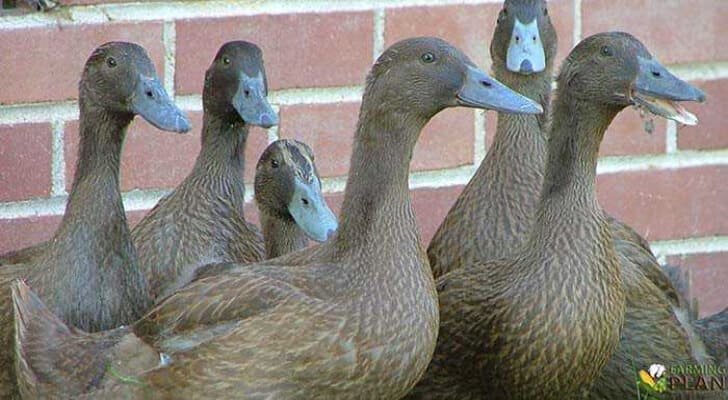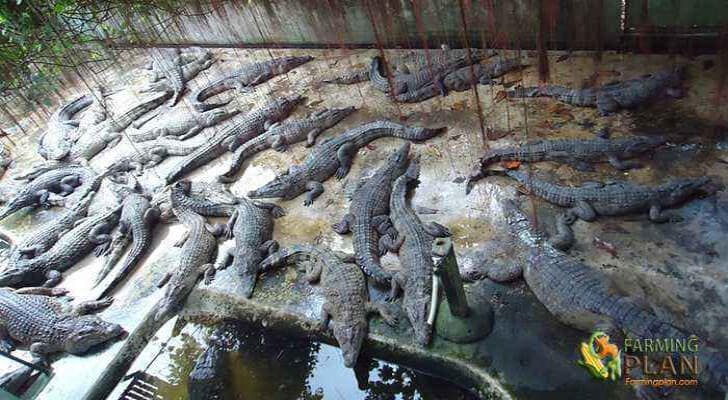The Khaki Campbell duck was created in Gloucestershire (England) shortly before the year 1900 by Adelle Campbell, from multiple crosses, used for it among other races. The Indian Runner duck (for its high rise), Rouen and Mallard (which gives it its resistance and good taste to its meat), apart from the blood of common ducks. Although Adelle Campbell, never revealed the exact genetics, of the creation of this race of the Campbell, simply giving some data of the races that used.
The advantage over the pure Indian broker was a more useful casing for meat and an improvement in egg production. Initially, the Campbells were a race of colors varied. At the same time as the Khaki color was being raised by Adelle Campbell, there existed in England an enormous patriotic fervor of the British troops, who fought in the war of Boers, and that also wore the khaki uniform.

Once the nickname of khaki, joined the “Campbell”, the breed gained even more popularity. He also gained a lot of notoriety, due to the egg-laying contests, which were very famous. In the first decades of 1900, a Khaki Campbel, put 346 eggs in 365 days, while another, I put one egg a day, for 225 days in a row.
It increased, even more, its notoriety, due to breeding standards, established by the Jansen family of Holland, which had up to 50,000 laying hens at a time with an average egg production of 335 to 340 eggs in 365 days during the decade 1950, putting in individual cages, each one of them.
Finally, the herd Jansen was dispersed, but the tradition and breeding, of the Khaki Campbell, was carried out, by the Kortlang family in England that still produces them, starting from that line Jansen.
Characteristics of Khaki Campbell Duck
Apart from khaki color, other colors such as white and black (hard to keep pure, because of recessive genes) exist, especially in the United Kingdom, but the color most used in practice for its results in The posture is the khaki. The color of the eggs is white and the weight of the eggs is about 70-75 grams. The quality of the feed directly influences the size of the egg.
They love the grass and keep the gardens and orchards free of snails, slugs, worms and other bugs. If sex is not performed by the cloaca, in pure khakis, you can know their sex, before appearing the typical snail to the males in the tail and the dark color of head and neck, by the color of the beak, Since the males have it greenish and the females somewhat darker.
- Head: Medium, fine and oval; Peak of medium length and in a straight line with the skull. Eyes full and bold.
- Neck: Medium length and rather arched, more in the male.
- Wings: Medium, carried closed on the sides.
- Back: Not very wide, long.
- Tail: Something long and raised. Feathers of the male sex, well curled.
- Chest: Medium broad and deep, carried forward.
- Body: Long, not too wide.
- Legs and toes: Thighs and shiny, short, medium. Straight fingers connected by interdigital membranes.
- Eggs: Color white
- Weight: male: 2.5 kg. Female weight: 2.25 kg.
Male color
- Body: Head, neck, tail and wing bar, brown tanned, preferably without green.
- Eyes: dark brown.
- Beak: dark blue-green with black bean. The rest of the body has an even tinge of strong khaki.
Female color
- Head: a dark khaki color. Slightly more than the rest of the body. Brown eyes.
- Peak: black-green with black bean.
- Body: persimmon earth, all drawn. The wing bar may be lighter. Quills and fingers: as close as possible to the color of the plumage.
Food
This breed is considered as good cleaners, so when leaving them outdoors and in a wide space they will end up with the vermin that they find, such as slugs, snails, and worms, besides it likes the grass.
In a way, they fit perfectly to be raised in gardens and will keep them clean. It is considered one of the best breeds, to reach high levels, it is advisable to feed them with a feed of higher protein content than the cereals such as corn and wheat.
Usage
Although over the years, they have become a rather breed type of exhibition, despite their high standing. Their creator was convinced that their birds were designed, for the production of eggs and not For exhibitions.
At present, the selected specimens can perfectly exceed 200 eggs per year, reaching peaks of 250 and some specimens passing from the 280. It is considered the best duck for laying eggs. To reach high levels, it is advisable to feed them with a feed of higher protein content than do cereals such as corn or wheat.
Special Feature
This breed can live outdoors all year round and fits very well both at low temperatures and high. In very harsh winters, they can be provided with a shed, with some kind of insulation, for sleeping. They usually put at dawn, so it is advisable to release them to the field around ten in the morning so that they already have, the eggs placed in their huts and do not leave them thrown by the meadow.
It reaches sexual maturity at six or seven months and can maintain its elevation until the third year, then gradually decreases. It is also put on during the winter if it is well fed.
Duck Profile
| Duck Name | Khaki Campbell Duck |
| Other Name | Canard Khaki Campbell, Khaki Campbel Enten, and Khaki Campbell Senden |
| Duck Purpose | Egg-laying |
| Feather color | Khaki |
| Weight | 2,25 to 2,5 |
| Climate Tolerance | All Climates |
| Egg Color | White |
| Egg Size | Small |
| Egg Productivity | High (200-250 eggs in the year) |
| Rarity | Normal |
| Country of Origin | North America |
FAQ
Are Khaki Campbell ducks friendly?
Khaki Campbell ducks are generally considered to be friendly, especially when they are raised in a human-friendly environment. They are known for being gentle and easy to handle, making them a popular choice for backyard enthusiasts. They also have an inquisitive nature and will often come up to investigate people and their surroundings.
What color eggs do Khaki Campbell ducks lay?
Khaki Campbell ducks lay white eggs, which can range from a very light cream color to a more medium-toned white. They are known for their prolific egg laying capabilities, with some hens laying over 300 eggs per year. The eggs tend to be larger than other duck breeds and have a thick shell that is resistant to cracking. In addition, the eggs have a higher content of omega-3 fatty acids than other types of chicken eggs, making them healthier for consumption.
How many eggs does a Khaki Campbell duck lay?
A Khaki Campbell duck can lay up to 300 eggs per year. This is a very productive breed of duck and one of the most popular for commercial egg production. The female ducks will start laying eggs at about five months old and can lay an average of 6-7 eggs a week. The peak of egg production usually occurs during the spring and summer months, when the days are longer and temperatures are warmer. During this time, some Khaki Campbells can lay up to 10 eggs a week.
Conclusion
The Khaki Campbell duck was created in Gloucestershire (England) shortly before the year 1900 by Adelle Campbell, from multiple crosses, used for it among other races. The Indian Runner duck (for its high rise), Rouen and Mallard (which gives it its resistance and good taste to its meat), apart from the blood of common ducks. Although Adelle Campbell never revealed the exact genetics, of this variety; some historians believe that she may have crossbred these varieties with each other or with another unknown type of domestic breed. Hope this guide has helped you! Good luck
As A Reference: Wikipedia


